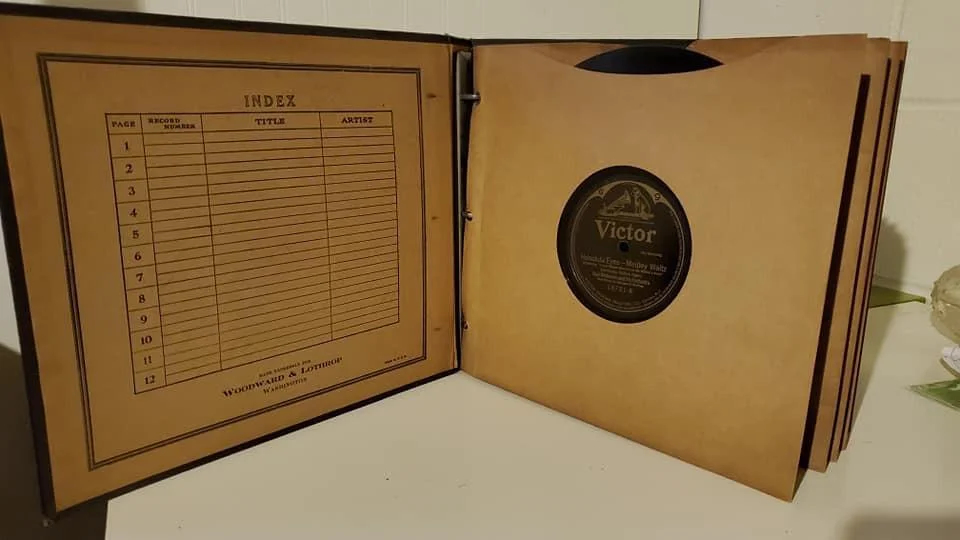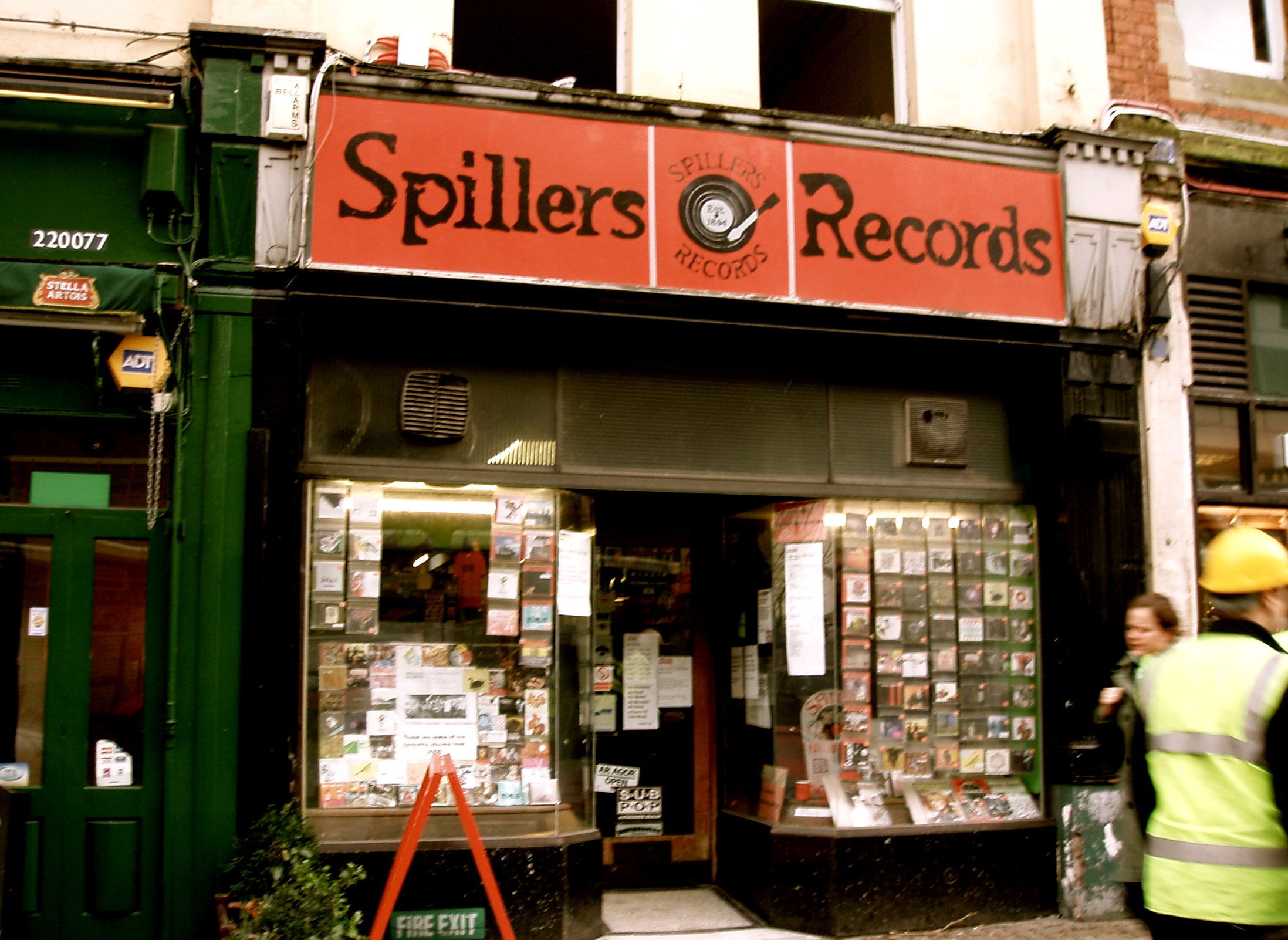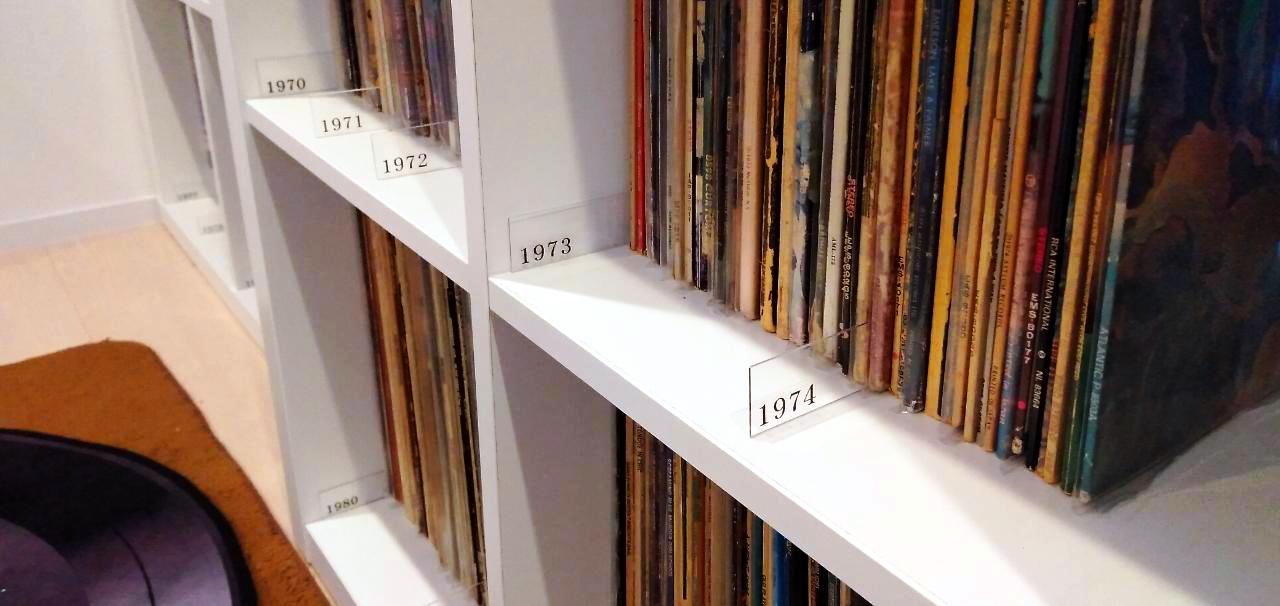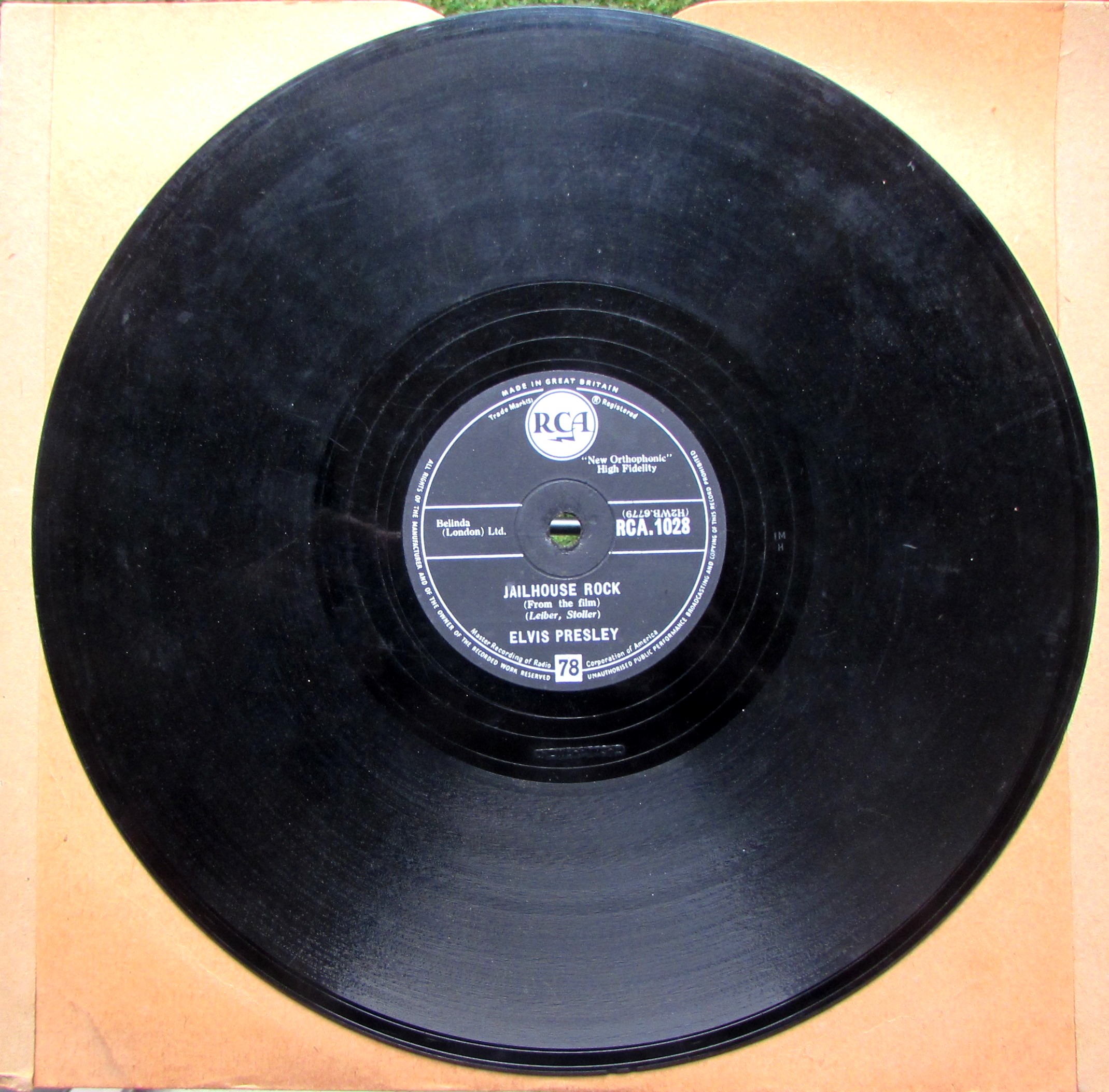Article 38: Just for the Record
The way we listen to music has changed over the decades, a new format comes along every thirty years or so that makes the previous one obsolete. I am of the generation that sat stunned watching Tomorrow’s World in England in 1981 when the presenter, Kieran Prendiville, demonstrated the CD format which was then later so spectacularly launched on 1st October 1982. CD sales peaked in the year 2000 when billions were sold around the world but then went into rapid decline when the iPod was launched that same year. Younger people it seemed preferred the convenience of mp3’s even though they had a far inferior sound quality. Now, along with the iPod, mp3s are all but gone having being replaced by superior audio formats and given that their technology and audio quality is obsolete, there is no reason to bring them back. Likewise, when Sony released their first CD player- the CDP-101 - on that date above, along with the first CD, Billy Joel's 52nd Street, many people thought it was the death of vinyl and for a while it was. However, sales of CDs, records and even the good old cassette are on the increase. Last year, the UK’s Now Spinning magazine announced that CD sales had increased by 15%* and new data released last month from the Entertainment and Retail Association shows that vinyl has already outsold CDs this year.
Just for the Record
ここ数十年で、我々の音楽の聴き方は変化した。約30年周期で新たなフォーマットが出現し、古いものは廃れるのだ。俺は1981年のイギリスで『Tomorrow’s World』を見ていた世代。プレゼンターのKieran Prendivilleが、1982年10月1日に華々しく発売されるCDのデモンストレーションをやっていた。CDのセールスは2000年に世界中で数十億枚を売るというピークを迎えたが、同年にiPodが発表されると、その後は急速に衰退していった。音のクオリティでは遥かに劣っていたが、若い人々はmp3の便利さを好んだようだった。現在iPodと共に、mp3は高音質のオーディオ・フォーマットにとって変わられており、そうなると古いテクノロジーを復活させない理由はない。前述のあの日、ソニーが初めてのCDプレイヤー、CDP-101を、ビリー・ジョエルの『52nd Street』という初のCDと共にリリースした時、多くの人はレコードの死を考えたし、実際しばらくはその通りになった。しかし、CDやレコード、さらには古き良きカセットのセールスは増加している。昨年イギリスのナウ・スピニング誌は、CDのセールスが15%増加*したと発表したし、エンターテインメント・アンド・リテイル・アソシエーションによる先月の新しいデータ†によれば、今年レコードの売り上げはCDのそれを上回っている。
Kieran Prendiville introduces the Compact Disc Tomorrows World
Kieran Prendivilleによる『Tomorrow World』でのCD
紹介
https://www.youtube.com/watch?v=bMp1pSVxoqw&ab_channel=LarryDors
The first audio recording was made by Thomas Edison on 12th August 1877. He used a rotating cylinder to make his recording and it wasn’t until ten years later when the flat disc version named the gramophone record (a.k.a. the phonogram record) was patented by a man named Emil Berliner, a German living in Washington DC, USA. The first commercially available recordings were on the Edison cylinders but the phonogram was almost concurrent with it, the first being released in 1895 by which time, a man named Henry Spiller had opened is record shop in Wales (see below) and by 1920 had become the preferred format as they were more economical to manufacture and more durable. Experiments were made on early discs as to which material best suited and in 1898, the first disc manufacturing factory opened in Hanover, Germany. The discs were made of hard rubber, 7” in diameter and were played back at 55 revolutions per minute (rpm) and some even started playing at the centre of the record and worked their way back out to the edge. Amazingly, there was no fixed rpm as most of the manufacturing and reproducing machines were turned by hand or by clockwork but eventually, Berliner settled on an approximation of Edison’s cylindrical recordings, that being between 70 and 80rpm. Once a master disc had been cut, these records were pressed in either 10” or 12” formats and could reproduce up to five minutes of music on either side. They were made from a material called Shellac, a mixture of slate dust and resin. Shellac proved to be ideal for manufacturing and sound but was also very brittle. So much so that it was common for 10% of the discs to be broken before they even reached the shops but as nothing else seemed better, it became the norm for records for the next forty years. One very important thing happened in this period though and that was in 1925 when the first phonograph players were manufactured that used an electric motor to turn the turntable. The fixed speed was a mixture of coincidence and economics and came about when a common, mass-produced motor turning at 3,600rpm was fitted with 46:1 gearing which was only used because it was also mass-produced. It gave the very convenient fixed rpm of 78.26 and also gave rise to their nickname: 78’s. These records were sold in sets or separately which you could collect into a set and would play a longer piece of music. The sets came in the form of a book or box which had paper sleeves for the records and they were called ‘albums’.
初めてのオーディオ録音は、1877年8月12日、トーマス・エジソンによって行われた。彼は回転するシリンダーを使っており、ワシントンDCに住むドイツ人、Emil Berlinerがグラモフォン・レコード(フォノグラム・レコード)と呼ばれる平面のディスクの特許を取るまでの10年間、それが使われていた。最初に商業的に売り出された録音は、エジソンのシリンダーだったが、フォノグラムもほぼ同時期で、最初のものは1895年に発売されていた。その頃までにはヘンリー・スピラーという男がウェールズ(下記参照)でレコード店をオープンしており、製造の安さや耐久性により、1920年にはこちらのフォーマットが好まれるようになっていた。1898年にはどの素材が一番音が良いかの実験が重ねられ、ドイツのハノーファーに最初の製造工場がオープン。ディスクはゴムで作られた7“の大きさのもので、1分間に55回転でプレイ、中にはディスクの中心から端へとプレイされるものもあった。驚いたことに、製造用や再生用のマシーンは手や歯車で回転させていたので、RMPは決まっていなかったが、Berlinerが70-80RPMという、エジソンのシリンダー・レコーディングに近い数字に落ち着けた。マスター・ディスクがカットされると、それらのレコードは10インチか12インチにプレスされ、各面5分までの音楽を再生できた。それらはスレートの屑とレジンを混ぜた、シェラックという素材で作られていた。シェラックは製造や音質には理想的だったが、非常に脆く、店に到着するまでに10%のディスクが壊れた。だが、これ以上の素材は無さそうだったので、その後40年間これがレコードのスタンダードとなった。この時期一つの非常に重要な出来事が起こっている。1925年に電気モーターでテーブルを回転させるレコード・プレイヤーが製造されたのだ。固定された回転速度は偶然と経済性の産物だった。通常の大量生産された毎分3600回転のモーターが46:1の歯車装置にピッタリであり、これが使われたのは単に大量生産されていたからであった。これは78.26RPMという便利な固定速度を生み出し、ここからが78回転というニックネームを生まれた。これらのレコードはセットやバラで売られており、バラのものは集めることでより長い音楽を聴けるようになっていた。セットはペーパー・スリーヴのついた本やボックス形式で売られており、これらは「アルバム」と呼ばれた。

写真 1a エジソンシリンダー
Photos 1a An Edison cylinder

写真 1b レコードのアルバム
Photo 1b An album of records.

写真 1c 世界最古のレコード店、カーディフのスピラーズ・レコードは1984年に開店
Photo 1c Spillers Records in Cardiff, Wales was opened in 1894 and is the oldest record shop in the world.
Recording technology advanced swiftly between 1910 and 1930 and none more so than the microphone. Better recording equipment enabled music to be captured more clearly and the fidelity possible at 78rpm could now be reproduced at 33⅓rpm. This speed was developed early but the cost of converting everything from 78 to 33⅓ was deemed too expensive until 1931 when RCA Victor tried to market the format. Aimed at the cheaper end of the market, RCA’s equipment was poor quality though so nobody was interested and although the 33⅓ remained, it was used only by radio stations who could afford it. No doubt launching something like that in the great depression didn’t help sales either. Our next stop though for recorded muisc, in one of history’s strange interventions, is that WWII played a vital part in the development of our audio listening format.
録音、特にマイクロフォンのテクノロジーは1910年から1930年の間に急速に発達した。より優れた録音機材は、よりはっきりと音楽を捉えることを可能にし、78回転でのフィデリティは33⅓回転で可能となった。この速度は早い段階で開発されていたが、RCAがこのフォーマットを売り込もうとした1931年までは、78回転のものを33⅓回転用に変換するのはコストがかかりすぎると考えられていた。低予算のマーケットを狙っていたため、RCAの機材のクオリティは低く、ゆえに誰も興味を持たず、33⅓回転は存続していたものの、高価な機材を買えるラジオ局だけが使用していた。大恐慌中にそんなものを売り出しても、売れるはずなどなかった。録音された音楽の次の停車駅は、歴史上最も奇妙な介入の一つ。第二次世界大戦が、オーディオ聴取のフォーマットの開発に大きな役割を果たしたのだ。
Music was considered to be a big morale booster for the Allied troops stationed overseas and the USA government ordered many 78’s to be shipped to Europe’s Prisoner of War camps to keep the prisoner’s spirits up. Alas, as mentioned above, the brittle Shellac records often arrived broken which of course had the opposite effect of reducing moral and so the more durable and flexible vinyl started to be used. Vinyl was expensive to manufacture at that time but the circumstances of war and men’s moral deemed the expense justifiable. By the end of the war, with all the government investment in it, vinyl was more viable and quickly became the way forward. It was just three years after the war ended, in 1948, that Columbia Records released its new 12” LP (long Player) and one year after that RCA Victor introduced the 7” 45rpm. Both formats were vinyl and used a smaller groove called the ‘Microgroove’ designed to use a smaller stylus to give higher fidelity. During the shellac/vinyl crossover time, record players were manufactured with a reversible stylus cartridge that had one stylus for Shellac records and one for the microgroove. Shellac 78’s continued to be manufactured into the mid-1950’s (and in India into the 1960’s) but the newer vinyl records quickly started to outsell the older format. The post-war economic boom across the USA also helped to popularize vinyl as more teenagers had pocket money to spend on records and increased sales led to manufacturing costs coming down. They also poured money into Jukeboxes that were increasingly popular in teenage hangouts. The Jukebox had been around since 1928 but were now brightly coloured and lit, were capable of holding 50, 45’s and had remote wall-boxes at tables for people to select their choice. Most importantly, they were filled with the kid’s choice of Rock and Roll records. Vinyl was rushing ahead as a shellac record could not endure the frequent playing, sometimes totalling in the thousands, that one vinyl record would take in a jukebox.
音楽は海外に駐在する連合軍の士気を高めると考えられ、アメリカ政府は捕虜たちの気持ちを保つため、大量の78回転のレコードをヨーロッパの捕虜収容所に送った。そう、前述の通り、壊れやすいシェラックのレコードは、しばしば輸送中に壊れ、これは当然逆に士気を低めてしまうということで、より耐久性のあるフレキシブルなヴィニールが使われ始めた。当時ヴィニールの製造は高価だったが、戦争の状況と人々の士気が、高価さを正当化したのだ。戦争が終わる頃には、政府の投資もあり、ヴィニールはもっと競争力を持つようになり、急速に良い手段とされた。戦争終結のわずか3年後である1948年、コロンビア・レコードが新たに12”LP(ロング・プレイヤー)をリリースし、その1年後にはRCAビクターが、45回転の7”EPを紹介した。どちらのフォーマットもヴィニールで、より良いフィデリティのため、より小さい針を使うよう設計された「マイクログルーヴ」と呼ばれるより小さな溝が使われた。シェラックとヴィニールの併存期は、片方にシェラックのレコード用、反対側にマイクログルーヴ用の針がついた反転できるカートリッジ付きのレコード・プレイヤーが製造された。シェラックは1950年代の中盤(インドでは1960年代)まで製造され続けたが、新たなヴィニール・レコードは、急速に古いフォーマットを駆逐し始めた。戦後のアメリカの経済的爆発が、ヴィニールの人気を後押しした。より多くのティーンエイジャーたちがレコードに費やすポケットマネーを持つようになり、セールスの増加が製造コストを下げる結果となったのだ。彼らはその溜まり場で人気を増していたジュークボックスにもお金を注ぎ込んだ。ジュークボックスは1928年頃から存在していたが、今やカラフルに彩られ、ライトがつけられ、50枚の45回転レコードを保持し、人々がテーブルから曲を選べるリモートのウォールボックスを備えていた。最も重要なことは、これらがキッズたちのお気に入りのロックンロールのレコードでいっぱいだったことだ。シェラックのレコードは繰り返しの再生には耐えられなかったから、ヴィニールは急速に広まった。ジュークボックスでは、時に一枚のレコードが数千回再生されるのだ。
写真2 俺のエルヴィスの「Hound Dog」シェラック盤。あまりに壊れやすいので、輸送中に10%が破損するため、レコード会社はアーティストにプレスされたディスクの90%分を支払うと契約書に記すようになった。
Photo 2 My 1958 shellac copy of Elvis; Hound Dog. They were so brittle that 10% were broken in transit and record companies started to write into their contracts that they would only pay an artist on 90% of the discs pressed to avoid paying royalties.
Two other speed was briefly used in the late 1950’s and early 60’s. The 16rpm discs (actually 16⅔) were 7” in diameter, mainly pressed as talking books but tape quickly superseded them and the music albums that were pressed at that speed were of poor audio quality, most retailers didn’t even stock them. A second talking book speed was 8rpm that was sponsored by the American Foundation for the Blind. It could hold four hours of speech on a 7” disc but it too disappeared very quickly.
50年代の終わり、そして60年代には短期間、他の速度も使われた。16回転(実際には16⅔)のディスクは7“で、主に本の読み上げ用にプレスされたが、テープが急速に取って変わった。このスピードでプレスされた音楽アルバムの音質は低く、多くの小売店はこれを取り扱いすらしなかったのだ。もう一つの本の読み上げ用の速度は8回転で、これはアメリカン・ファウンデーション・フォー・ザ・ブラインドがスポンサーだった。これは7”のディスクに4時間収録できたが、こちらも急速に消えていった。
The 16rpm speed did however create the first background music. The Seeburg 1000 BMS1 phonograph was introduced in 1959 and was used exclusively to play background music in offices and restaurants. The machine played 25 discs that were 9 inches in diameter and were stacked on a spindle. The records were mono and could play up to 40 minutes per side giving a total of 40 x 2 x 25 minutes or over a day and a half of continuous music and because it was strictly intended for background music at low volume, the sound quality was not important. The Crysler Corporation in the USA also used the 16rpm disc for their ‘Highway Hi-Fi’ system which was a record player installed in their cars between 1956 and 1958. The records were made exclusively for them by Columbia Special Products.
しかしながら、16回転という速度は、初のバックグラウンド・ミュージックを生み出した。1959年、オフィスやレストランでのBGM専用に、The Seeburg 1000 BMS1フォノグラフが導入された。この機械は9インチのディスクを25枚、スピンドル上に保持していた。レコードはモノラルで、片面40分。つまり40分x2面x25枚、1日半に渡って音楽をプレイすることができた。完全に小さいボリュームでプレイされるBGM用だったので、音質は重要ではなかったのだ。アメリカのクライスラー社は、彼らの「ハイウェイHi-Fi」システム用に16回転を使用した。これは56年から58年の間、彼らの車に取り付けられていたものだ。このレコードは、コロンピア・スペシャル・プロダクツによって、彼らのためだけに製造されていた。
Vinyl has evolved much since the 1950’s. The small modifications to the cutting and pressing techniques as well as improved vinyl itself can now give us a much higher fidelity. The introduction of the first 12” single in 1975 (Al Downing’s I’ll Be Holding On) was another accident when producer Tom Moulton’s mastering engineer ran out of 7” blank discs and used a 12” instead. The rise of punk and New Wave brought all sorts of picture discs, shaped discs and popularised coloured vinyl (coloured vinyl had actually been around since the earliest vinyl records and RCA Victor even used it in 1948 for different genres. Green was for Country music, yellow for kids, Classical was red, etc) and there have been novelty records that have two grooves on one side giving you a 50/50 chance of finding the one you actually want. Artwork became an integral part of the LP starting with The Beatle’s Sgt Pepper album in 1967 and reached a peak with Progressive Rock’s outstanding gallery of covers throughout the seventies. The sleeve became in many cases as important as the music itself and many designers were instantly recognisable and in great demand for their art. Roger Dean, Storm Thorgerson and Rodney Matthews may well have remained undiscovered if it were not for the LP cover.
ヴィニールは1950年代以降大きく進化した。改良されたヴィニール自体に加え、カッティングやプレスのテクニックのちょっとした変更が、より高いフィデリティを実現したのだ。1975年に初めて導入された12“シングル(Al Downingの「I’ll Be Holding On」)も、アクシデントの産物だった。プロデューサー、Tom Moultonのマスタリング・エンジニアが、7”のブランク・ディスクを切らしており、12“を代替として使ったのだ。パンクやニューウェーブの台頭は、あらゆる種類のピクチャー・ディスクや変型ディスクをもたらし、カラー・ヴィニールを人気にした。(実はカラー・ヴィニールは、極初期のヴィニール・レコードから存在しており、RCAビクターは1948年に様々なジャンルで使用していた。緑はカントリー・ミュージック、黄色は子供向け、クラシックは赤という具合に。)また片面に2つの溝が掘られた企画モノもあった。実際に聴きたいものを聴けるのは50%の確率という訳だ。1967年にリリースされたビートルズの『サージェント・ペパーズ』からアートワークはLPの重要な一部となり、それは70年代のプログレッシヴ・ロックにおける突出したカヴァーのギャラリーにおいてピークに達した。多くの場合においてスリーヴが音楽自体と同様重要になり、すぐに見分けのつく多くのデザイナーたちがすぐに現れた。もしLPのカヴァーがなければ、Roger Dean、Storm Thorgerson、そしてRodney Matthewsといった人たちも、いまだに無名だったかもしれない。
The heyday of the record has no doubt gone but it is obviously having a new lease of life. It may not at the moment be the preferred medium for listening to music but it is now often manufactured as a marketing and promotional item, limited editions being pressed to be sold as merchandise and the older albums are becoming more collectable every day. Japanese vinyl in particular because of the higher quality pressing and heavier vinyl, is much sort after around the world and although it is highly unlikely that vinyl will ever become as popular as it was, it is, unlike the CD, far from dead.
レコードの全盛期は間違いなく去ったが、それは明らかに活気を取り戻している。現在これは音楽を聴くためのメディアとしては好まれていないかもしれないが、しばしばマーケティングやプロモーションのアイテムとして製造されている。マーチャンダイズとして限定エディションがプレスされ、古いアルバムは日々コレクターズ・アイテムとなっている。日本のヴィニールは、そのクオリティの高さと高重量で、世界中から探し求められている。ヴィニールがかつてほどの人気を取り戻すことはないにしても、CDとは異なり、廃れているとは程遠い状態である。
写真3a 俺のオーディオ・ルーム。ここで多くの時間を過ごしている。
Photo 3a My audio room. I spend a lot of my spare time here

写真3b 良い音楽は良い音楽。ジャンルは関係ない。俺は年代ごとに並べている。
Photo 3b Good music is good music and I find genres irrelevant. My filing system is by year.
https://nowspinning.co.uk/cd-sales-increase-again-in-the-uk/
Copyright © 2022 Upp-tone music Co., Ltd. All Rights Reserved.

